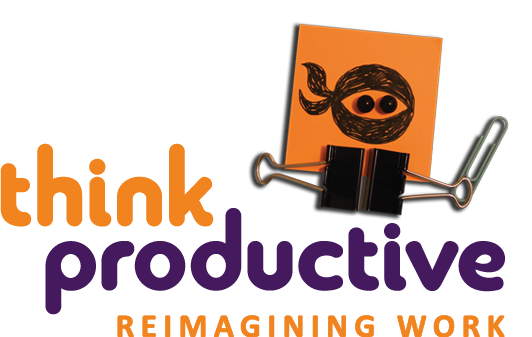In our productivity workshops, we’re often asked how to improve meetings.
First think – do you need a meeting at all? In this post, Think Productive UK founder Graham Allcott suggests a series of alternatives
You can also find out details of our Making Meetings Magic productivity training here
 Have you ever thought about the cost of a meeting?
Have you ever thought about the cost of a meeting?
I don’t mean the room hire and biscuits, or the hour of your life and the cost of that time to your boss. I’m talking about the cost of getting all of those people in a room for an hour – some of you are very highly paid, even when stuck in a meaningless meeting.
So why not try one of these alternatives?
Get on with it: Don’t wait for an approval meeting – remember, it’s usually better to apologise than to ask permission.
Email – Whilst our first instinct when trying to co-ordinate a group of people is usually to get them all into one room, it is, in fact, easier to use email to get everyone onto the same page.
Conference Calls – Can be done in half the time of a well run meeting. The topic can be more focussed and fewer people will jump in with duplicate or valueless comments and ideas.
Collaborative Technologies – Technologies such as Google+ allow you to collaborate on documents or ideas from day one, with those people who you would normally ask to attend a meeting for their specific expertise.
Desk-hijacking – Visit the other person at their desk – perch, deliberately uncomfortable and probably distracting one or two of their colleagues too. The conversation is stripped down to its bare bones. The end result is often an email with everything you need. (More on desk-hijacking here)
Set format forms, followed by brisk 15 minute meetings – Great for regular meetings (ie 1-2-1’s or progress meetings). Prepare a checklist for the meeting, which attendees fill out beforehand. Start every meeting with the same question – “What were the action points from our last meeting?” before running through a list of open questions and then finally a summary of actions for both to take away.
Round up emails – It’s important for good communication and morale that teams are up to speed with what everyone else is working on. Having an internal communications person collate the best of the week’s news and then ensuring everyone reads it is much quicker than asking everyone to sit in a room hearing it for an hour or more.
Corridor consensus building and MBWA ( ‘Management By Walking About’) – By setting aside some time, either once a day or certainly two or three times a week, you make yourself available to your team, and to those outside of your direct line management but with whom you may need to collaborate. Done well, this can cover off half a dozen or more issues in no more than half an hour.
Daily Huddle – This takes no more than 15 minutes each day, deals with small issues and happens at the same time every day.
The Daily Huddle asks five questions, which are the same each day:
1. What’s your good news?
2. What are you working on today?
3. What’s our progress towards achieving the key numbers in our business?
4. Where are you stuck?
5. Are you OK for tomorrow’s huddle?
Learn the art of desk-hijacking thinkproductive.co.uk
Where you go wrong in meetings thinkproductive.co.uk
Time Starved? How to Keep Meetings Short Entrepreneur.com
Wasted time in meetings costs the UK economy £26 billion Business Review Europe


Excellent points. I am also interested in experimenting with Stand-up meetings. Evidence is showing they are roughly half the length and equally as impactful. Also, “walking” meetings if there are only 2-3 people involved. Pick a destination and get some exercise as you discuss something. Use a voice recorder to capture notes.